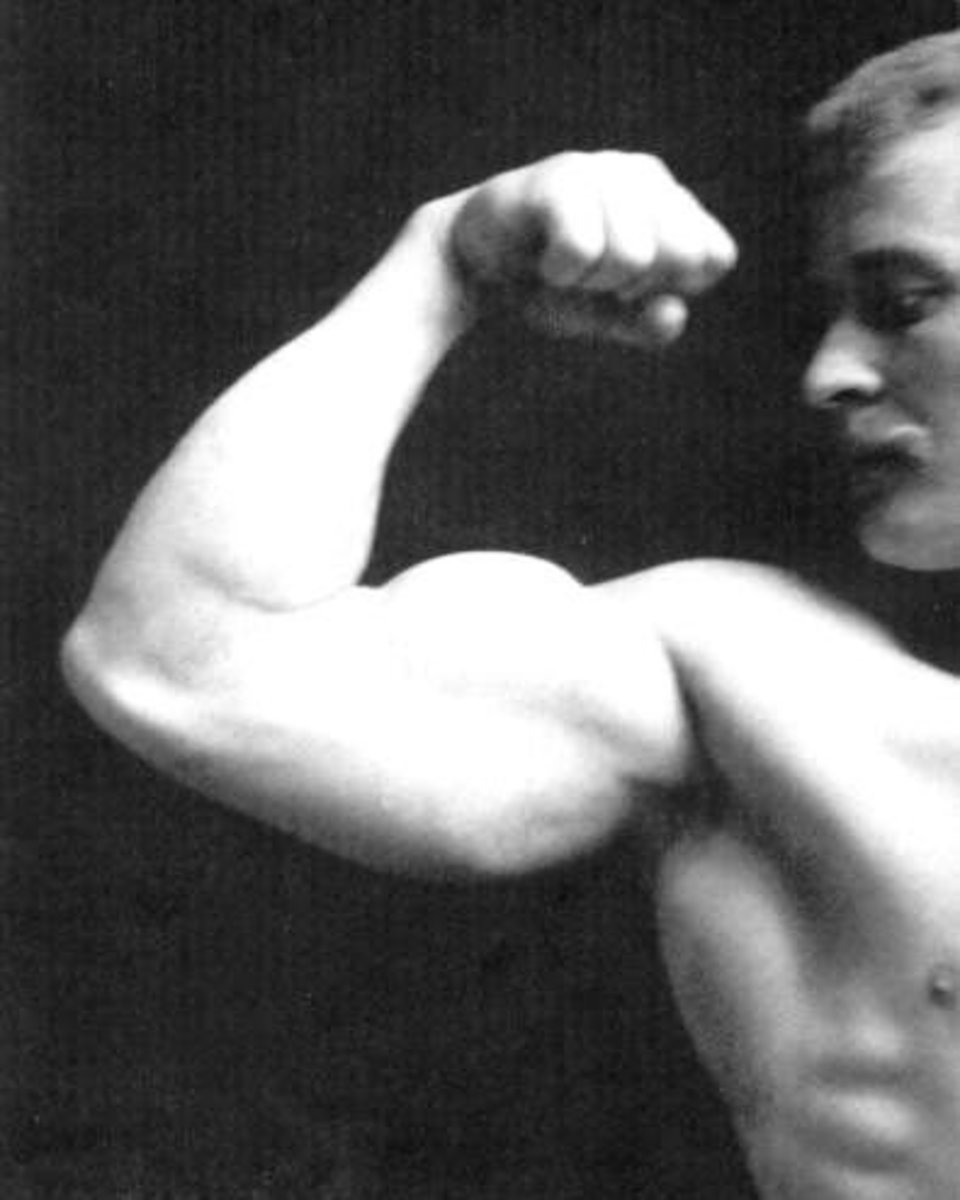How To Start With Parkour / Free Running
What Is Parkour?
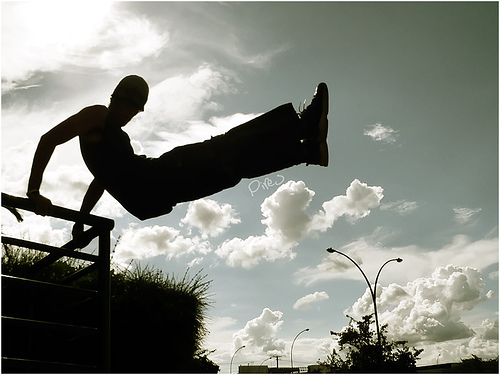
Parkour is a training regimen originally inspired by military obstacle course training and practices of certain African Tribes. Parkour, also called Free Running, is a mostly individual activity in which the practitioner often employs their whole body in order to achieve a result, such as getting to a certain, hard to reach place.
Parkour makes full use of the human body, involving jumping, crawling, vaulting, and generally moving around using the hands and arms as much as the legs and feet.
Parkour has recently gained much popularity after being featured in several action and sports related media.
Free Running

The forerunner of parkour is considered to be French Naval Officer Georges Hébert, who promoted exercise and training routines based on practices he observed in indigenous tribes he met while in his expeditions through Africa, who, according to Hébert, were highly nimble and full of grace in body and movement, despite having no actual gymnastics tutor apart from mother nature.
The man responsible for the eventual establishment of parkour as a sport is Raymond Belle and his son, David Belle. It was David who, altering gathering a small group of likeminded friends and some of his cousins, called the "Yamasaki", started creating a training regimen based on putting themselves in challenges that forced them to develop the mental and physical strength to succeed,
During the training, no one could complain or display a negative attitude, and as such, the only allowed reaction to failure was simply to try again. The group put themselves through conditions of hardship in order to develop themselves, such as sleeping without a mattress and enduring cold and hunger. When a certain movement was done successfully, it was not considered a success until it could be reliably repeated by any members of the group.
Fitness
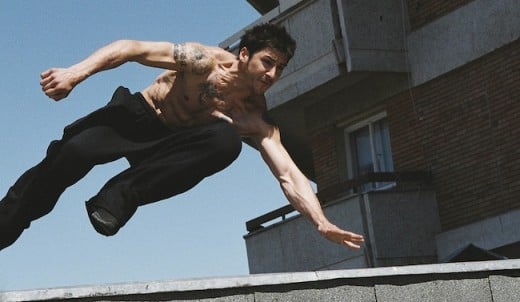
Parkour, however, contrary to what many people think, is not exactly a sport. In fact David Belle and other proposers of the practice are very much opposed to the idea of Parkour as a sport. Erwan Le Corre, a French practitioner and physical education teacher, says that "parkour must be preserved the the competition inherent in sport".
According to them, parkour is not a sport, but an art, a lifestyle choice and a certain kind of mindset. Parkour does not aim to improve one's physical performance, but to enable them to achieve their goals and take matter into their own hands.
As such, Parkour has not risen as an organized, sponsored sport, but has mainly gained popularity through media, specially youtube videos.
Health Benefits of Parkour
Parkour is an activity that brings many health benefits to whoever practices it.
Its important to note that people should consult a physician in regards to any health benefit a certain exercise or movement might offer to them. An exercise that may be healthy to you might be dangerous to another person.
- Workout: due to the wide range of movements used in parkour, it's pretty easy to get a full body workout out of only half an hour of practice. Movements including running, jumping over obstacles, vaulting and others require full use of the body's muscles, allowing your body to be exercised fully;
- Confidence: parkour boosts one's sense of confidence since it essentially teaches said person, in a very practical way, that they can achieve what they want using only their own body and mind. The sense of satisfaction one gets out of a successful parkour session has been described as exhilarating;
- Mind: parkour forces the brain to develop quick reflexes and thinking skills to overcome the obstacles along the course, since avoiding said obstacles is not allowed during a session. This allows the practitioner to be able to react quickly to almost any situation in order to prevent harm to himself or others;
- Creativity: it is not enough to have quick reflexes if you can't come up with a way to get through an obstacle. As such, parkour offers an incentive to the brain to come up with different ways to overcome challenges. A good parkour session should always give reasons for the brain to be creative and get through obstacles in different ways;
- Body: your body's core is at constant movement and pressure during a parkour session, since it is responsible for absorbing most impact and directing the most strength during whole body movements. The body's core is thus strengthened through constant practice and this lowers the risk of lower back wounds;
- Skill: Parkour allows one to easily develop skill related fitness and abilities such as agility and dexterity, Since you don't use these skills much during everyday life, parkour offers an excellent opportunity to develop yourself in such ways;
Getting Started With Parkour
Before you continue reading, it’s important to note a few things: parkour is not just for young, athletic young men. Parkour can be done by anyone, at pretty much any time and place, if you are creative enough.
Parkour has been successfully practiced by people over 40 years old, overweight and even people with cerebral palsy. Of course, this doesn't mean that you should be vaulting over windows and such things right off the bat. As with any exercise, it’s important to condition your body first, to lower the risk of injury and to prepare your body for the effort it will have to make.
Remember that parkour isn't only what you see in those high action movies with people jumping from one building to another. Those are highly advanced stunts that are only done by highly trained and experienced professionals. Parkour is just moving through obstacles using your whole body and mind, and you don't have to put your life at risk while practicing it.
Watch A Man With Cerebral Palsy Practice Parkour
Fitness With Parkour
As parkour is mostly freeform, this article won't be telling you how to practice it, All you have to do is get to a safe environment in which you can move around without causing trouble, such as a park, and then just try to get through the obstacles you see using only your body and mind, and being creative as to how you get through said obstacles. Is there a small wall in your way? Try climbing and/or vaulting over it. Is there a hole? Try jumping into it and climbing back out, or jumping over it in different ways.
I do recommend, however, that you try to parkour or physical education professionals in your area first. There are parkour schools after all, and joining one will provide you with not only a good environment in which to practice, but also a tutor that can help you develop. Additionally, remember to consult a medical professional about your physical conditions to perform this kind of exercise without risk of injury.
As such, this article will be mostly focused on a few exercises you should likely get used to before attempting any sort of free running type thing.
Passive Bar Hang
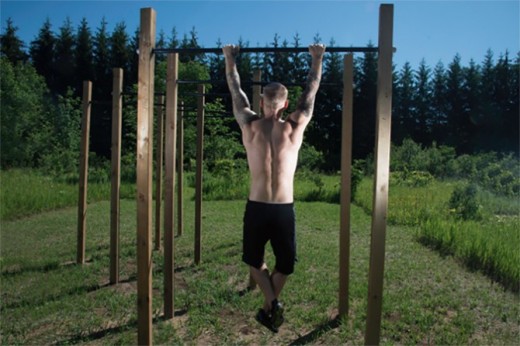
Find an horizontal hanging bar that can support your weight, and attempt to hold yourself up in the air by your arms using it. Just by passively hanging off a bar, your arms and your shoulders will get better accustomed to supporting the weight of your body. This is important because parkour involves a lot of movement that cannot be performed using only the legs.
This exercise will help to develop grip and shoulder strength. A beginner should aim to remain hanging on the bar for up to 15 seconds on the first day. As you get used to it, try remaining on the bar for 30 or more seconds, until you can actually keep yourself there for five minutes or more. DO NOT rush this, however, go slowly, Try to increase the length of time you remain on the bar on a daily basis, increasing some seconds each time.
Full Squat
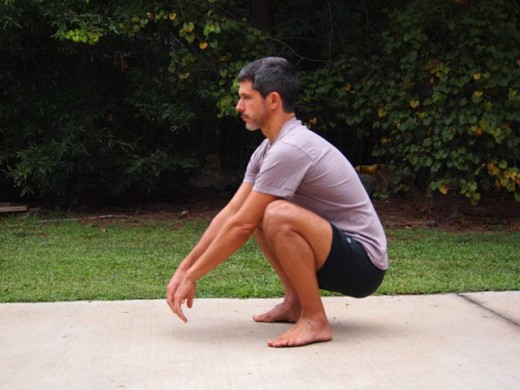
A full squat is great for developing better posture, correcting your back and increasing strength and stability on the hips and legs, and its actually harder than it looks!
To do a full squat, crouch as if you were going to sit on the ground, but keep your weight entirely on your feet. Put your arms forward and over your knees to balance yourself. Only your feet should touch the ground, otherwise, you're doing it wrong.
Don't confuse a full squat for a half squat! A half squat is very similar, but only part of your feet touch the ground during a half squat. A full squat requires the entire length of your feet to be in contact with the floor.
Wall Support
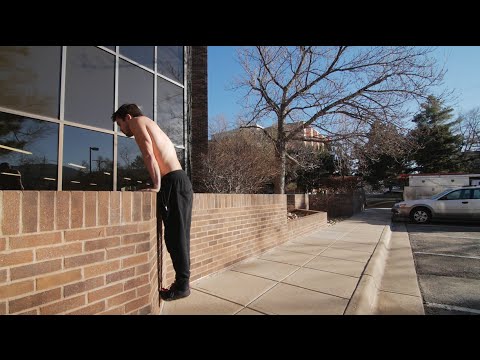
Find a wall that isn't taller than you and is strong enough to support the full weight of your body. Put your hands on top of it and lift yourself upwards as if you were going to climb over it. Once your arms are fully straightened downwards and supporting most of your weight, stick your feet out so your toes touch the wall, with your legs straight.
Remain in this position for a long as you can. This exercise is essential to developing the ability and shoulder strength needed to climb and jump over walls and over similar obstacles. Once you can remain in this position for over 30 seconds, you'll be good to go.
Quadrupedal Movement
Quadrupedal movement is exactly what it says on the tin: moving yourself using all four limbs.
As silly as it might seem to your average onlooker, quadrupedal movement is an important skill that sadly, many of us are losing. While bipedal movement became the norm due to its convenience (allowing us to handle tools and other things while moving), quadrupedal movement is an excellent form of exercise that is a great way to develop one's motor skills.
Quite simply, try to move around as best you can using all your form limbs. No, this doesn't mean you should be crawling around like a baby, it means you should be trying to move as fast as you can while on all fours. There are several techniques that can be employed for this, too many to be mentioned in this one article, but you can look at the video provided for guidance.
Jogging
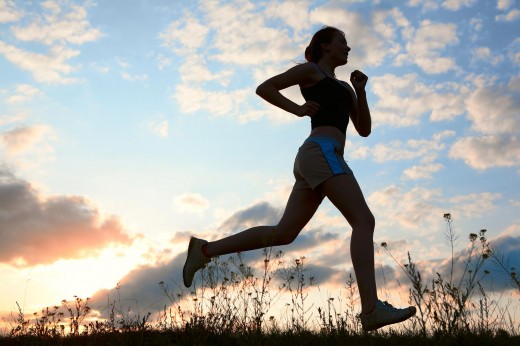
Just jogging around is a great way to develop your stamina and leg strength. The commonly known health benefits of jogging are better cardiovascular health, increase in bone density and, of course, weight loss.
Just jogging around every day during a time of the day when the sun isn't too harsh and it isn't too cold is good enough to develop yourself enough to handle the higher impact activities of jumping, vaulting and sprinting.
Compression Sleeve And Shin Splint Supports For Jogging
Ab Workouts
Its also recommended that you try to work out your abdominal region a bit before staring with free running, since core body fitness is important for parkour, as it is the area that will be absorbing a lot of indirect impact from the limbs at all times.
A simple way to work your abdominal region is to put your back against the ground,contract your knees so your legs are folded and your knees point upwards as you keep them togheder, raising your hands upwards along the floor, then repeately lifting your body as if you were to hug your legs, then comming back down to the floor and touching the back of your hands on it. Repeat this as long as you can, increasing it a bit every day.
Author's Note
Remember that this article is just meant as a general guideline for people who want to start practicing parkour, and not as a strict training regimen. You should always consult a physical education professional before attempting any form of possibly injury causing exercise. This article should not be treated as a sure fire way to improve your health or developing your skills.
Everyone has their own body with their own characteristics, as such, try to find out what works best for you, and just have fun!





